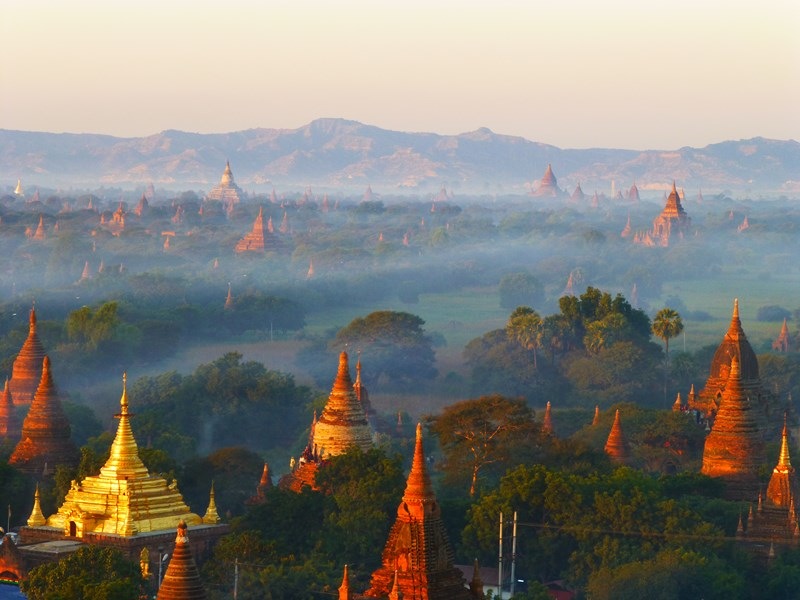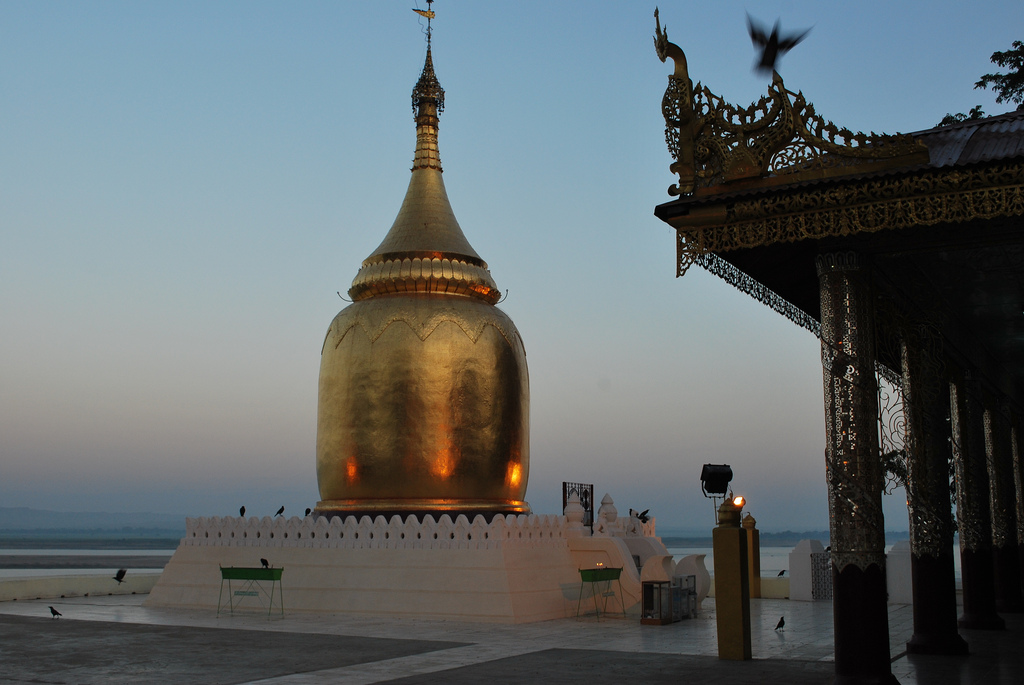Opposite the Wang River in the municipality of Lampang province, Thailand, is Wat Pongsanuk (also spelled Pong Sanuk or Pong Sanook), a 500-year-old temple site with buildings in a mix of Lanna, Burmese and Chinese architectural and decorative styles.
Similar to Wat Phratat Lampang Luang, Wat Pong Sanuk is surrounded with a white wall built on a man-made mound of earth.
A two-year historically informed restoration project of the viharn (Viharn Phra Chao Pun Ong) was given an Award of Merit in 2008 by UNESCO.

Its legend and architectural background :
Wat Pongsanuk was built during the reign of King Anantayot in 680 CE, the same period that Lampang was settled. The temple was also the place where the city first sacred pillar was laid. The name of the temple according to legend comes from the Pong Sanuk community that migrated to live in this area. Literally, Pong Sanuk in Thai means “the clan of fun”.

In ancient times, the temple had many monks and novices studying inside. To be able to oversee the whole large area, the temple was divided into two sections; Pong Sanuk Nua (North) and Pong Sanuk Tai (South). This is a rare practice to have two temples under the same Sema, (sacred stone designates the area). You will also notice that one section of the temple is built on a mound. This mound, or locally known as ‘Mondoi” symbolizes Mount Meru, home of the gods and Holy Land according to Buddhist cosmology.

Highlights
The temple shows an outstanding combination of Lanna, Burmese and Chinese Styles. One of the most prominent features of the temple is the multi-layered roof and cruciform-shaped pavilion of Viharn Phra Chao Phan Ong.

Internally the viharn is decorated with 1,080 Buddhist Tablets. You will also get to see plenty of Buddhist art and fine designs throughout the entire compound. The open Lanna-Burmese style viharn is also the only teak wood temple left in Thailand. The UNESCO award was given for the restoration of this most important building, making use of community collective efforts to use traditional styles of decoration to restore the many parts of the temple which had fallen into disrepair previously.

Buddhist tablets near the supporting beam and the decorations inside Viharn Phra Chao Phan Ong
Another important feature of the temple is the Buddhist-related materials that kept inside the temple such as Pra Bod (canvas and Sa paper painted the Pravesdsandon, Buddha’s past life tales), wooden Buddha images and the chests of various sizes and designs. Ancient Lanna people called this chests“ Heep Dham”. It is said that the chests are contained with an ancient hand written scrolls, and Tripitaka.

How to get there
The temple is located in central Lampang city. It is found on Pongsanuk road, just North of the Wang river. You can go there by songthaew, horse drawn carriage, a motorbike or bicycle.
Best time to visit
The temple opens daily during daylight hours, but we recommend going there early in the morning or late afternoon to avoid the strong direct sunlight.
Opening Hrs : 05:30- 20.30

Writer’s Note
Of numerous temples found in Lampang, you will notice the connection to the Burmese in their construction style. This is because Lampang used to be a center of teak logging in North Thailand. During those years many Burmese migrated to live in this area to work on the teak logging business. The wealthy Burmese built a number of Burmese style monasteries as an act of gaining merit.
There is a local saying that if you would like to see Burmese temple in Thailand, just go to Lampang. Apart from Wat Pongsanuk, there are other Burmese style temples in the city such as Wat Sri Chum, Wat Sri Rong Mueang, Wat Chedi Soundlang and Wat Phrakaew Don Tao. Story and photo by Wanweena Tangsathianraphap






































